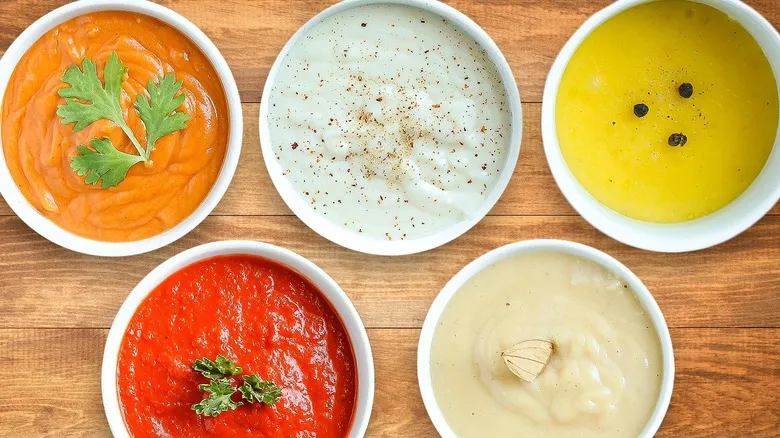Origins of the five mother sauces
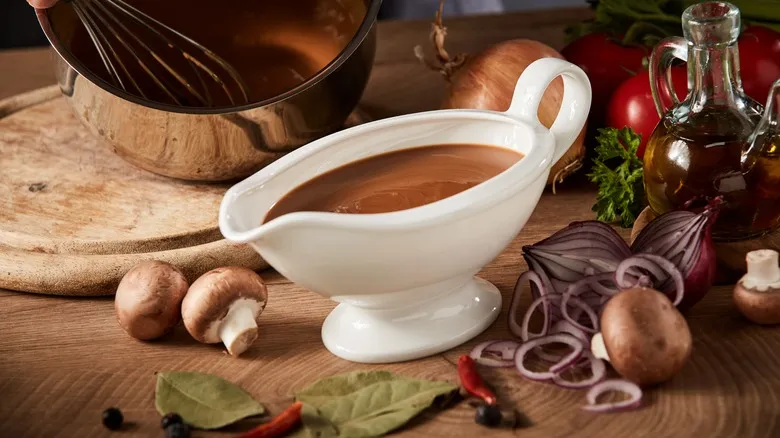
French chefs have long approached their craft with dedication, and for centuries, they have honed cooking techniques and organizational strategies to enhance kitchen efficiency and elevate the flavor of their dishes. One of the notable innovations from this tradition is the concept of mother sauces. "The French mother sauces gained prominence in the 19th and 20th centuries thanks to Marie-Antoine Carême and Auguste Escoffier," explained Ashley Lonsdale. "They have remained true to their origins throughout the years!"
However, it took time for the selection of mother sauces to reach its present configuration. When Carême introduced his set of foundational sauces in the early 19th century, he identified only four: velouté, béchamel, allemande, and espagnole. In the early 20th century, Escoffier reclassified allemande sauce—a rich sauce made from veal stock, egg yolks, and cream—as a daughter sauce of velouté, rather than a standalone mother sauce. He also added two additional sauces, hollandaise and tomato, resulting in the five mother sauces that every classically trained French chef is familiar with and utilizes today.
Béchamel sauce

Even if you’re not familiar with béchamel sauce, you’ve likely encountered it or a similar version. "Let’s not forget that mother sauces aren’t just for gourmet dishes. One of the most traditional uses of béchamel is as the foundation for macaroni and cheese!" said Ashley Lonsdale. "It’s also a key component in moussaka and sausage gravy."
One reason béchamel sauce appears in so many beloved everyday recipes is that it’s the easiest of the mother sauces to prepare. While the others often require stock (ideally homemade), a wide range of aromatics, or precise mixing and cooking techniques, béchamel can be made in under thirty minutes with just a few basic ingredients: a roux (a mixture of equal parts butter and flour cooked together) simmered with milk, salt, pepper, and a touch of onion, clove, and nutmeg for added flavor. It’s a straightforward sauce, but to achieve the best results, Eric Tiglao recommends closely monitoring your roux. "Burning the roux is a frequent error; it leads to a burnt flavor," he noted. Ideally, he added, your sauce "should be smooth and creamy, with a luxurious texture."
Béchamel daughter sauces and favorite dishes

Similar to other mother sauces, béchamel is highly versatile and can be adapted in many ways. This adaptability is one reason it often goes unnoticed by many American cooks, even though it’s quite prevalent: it’s a true chameleon (if you’ve ever enjoyed milk gravy or cream sauce, you’ve experienced a close cousin of béchamel). As Ashley Lonsdale pointed out, macaroni and cheese exemplifies this perfectly: no matter what your mother called it, the sauce that holds the macaroni together is essentially béchamel with a generous amount of cheddar or American cheese melted in.
By substituting the cheddar with a blend of gruyère and parmesan, you create Mornay sauce, one of the classic derivatives of béchamel. Soubise sauce is another variation, made by enriching béchamel with pureed, cooked onions for added depth of flavor – it pairs wonderfully with vegetables or serves as a base for casseroles. For a sophisticated sauce to complement perfectly grilled seafood, consider Nantua sauce – a béchamel infused with shrimp or crayfish butter (a strained puree of cooked shrimp or crayfish, along with aromatics and butter).
Velouté sauce

Velouté sauce, similar to béchamel, starts with a roux made from flour and butter. However, instead of using milk, velouté derives its richness and flavor from a light, clear stock, which can be made from seafood, poultry, or even veal. The preparation process is quite similar: first, you cook the roux, then gradually incorporate the broth while whisking continuously to eliminate any lumps, cooking until the sauce thickens enough to coat the back of a spoon. "Velouté should be smooth and shiny," Eric Tiglao noted. "If you don't remove the impurities during cooking, it won't achieve that velvety texture."
As you might expect from its straightforward ingredient list, velouté is a subtly flavored sauce that doesn’t overpower other dishes. Nevertheless, it serves as an excellent complement, particularly for other mild foods that might otherwise seem bland. For example, a seafood-based velouté pairs wonderfully with delicately flavored white fish fillets, and a simple cooked chicken breast is elevated in both appearance and taste when topped with a poultry velouté.
Velouté variations and common uses

Velouté sauce may not be particularly thrilling on its own, but its subtle, savory flavor serves as an excellent foundation for other, more vibrant sauces. For example, Allemande sauce, which is an enriched veal velouté, was highly regarded by 19th-century master chef Antoine Carême, who included it among the four original mother sauces.
Similar to béchamel sauce, velouté is versatile and can adopt a completely different personality based on the stock used and the flavorings added later. White wine sauce, a classic derivative of velouté, is essentially a fish-based velouté infused with white wine and enriched with cream. Another traditional variation of fish-based velouté is Normandy sauce, which incorporates chopped mushrooms, egg yolks, and cream for added richness. If you substitute these ingredients into a chicken-based velouté, you'll create poulette sauce, yet another classic derivative.
Espagnole sauce
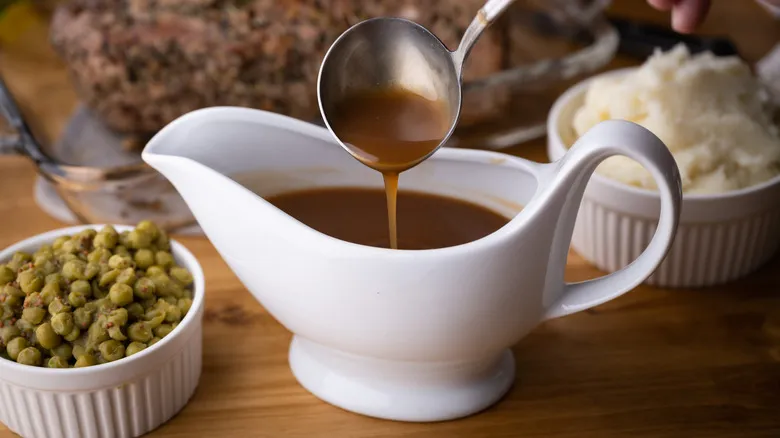
Espagnole sauce may have the least recognizable name among the mother sauces, but once you taste it, its essence is unmistakable. This rich, brown sauce is crafted from beef stock and evokes the familiar flavor of the brown sauce often served with red meat. When prepared properly, it boasts a deep, robust flavor that can enhance even the most modest cuts of beef.
One reason many home cooks might not be familiar with espagnole sauce is that it requires more ingredients and a bit more effort compared to the simpler velouté and béchamel sauces. Like velouté, espagnole sauce begins with a butter-flour roux, but it also incorporates broth—typically veal or beef. The sauce derives much of its depth from additional components, such as tomato paste, fresh herbs, and a cooked mirepoix (the classic French blend of diced onions, celery, and carrots), all of which must be strained out before serving. Some recipes further enrich the sauce by adding ingredients like mushrooms, smoked pork belly, and garlic.
Is espagnole sauce dead?
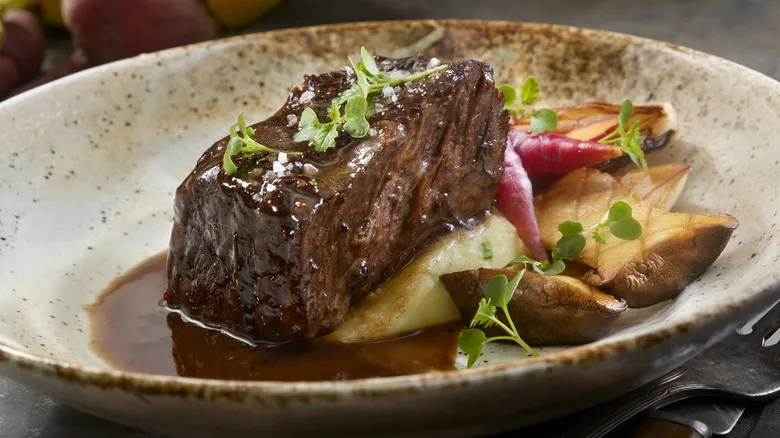
Classic espagnole sauce boasts a rich, meaty flavor that many find appealing, especially those who enjoy red meat. While the preparation isn't overly complicated, it does demand a significant time investment, particularly if you opt for the traditional method that begins with a brown broth made from roasted bones. Consequently, even professional kitchens often choose to skip homemade espagnole sauce in favor of simpler options like meat juice reductions or sauces made from concentrates or powders.
Nevertheless, espagnole sauce still has its dedicated fans. Ashley Lonsdale, for instance, not only loves it with braised lamb shanks and short ribs but also uses it to create demi-glace, a reduced and concentrated version of espagnole that is essential in classic French cuisine. "It complements beef, lamb, and vegetables beautifully, and it freezes well, making it convenient to have on hand for a quick dinner with rich flavors," she noted. She isn't alone in her appreciation. A member of the Chef Talk forum remarked, "Making espagnole these days as the base for demi [glace] feels like a nostalgic throwback. That's exactly why I do it."
Hollandaise sauce

For American home chefs, hollandaise is the most recognized of the five mother sauces. Many of us are familiar with the rich, eggy, and often tangy sauce from dishes like Eggs Benedict and other celebratory breakfast options. However, hollandaise has a history that predates the invention of bottomless Mimosas. Recipes for this sauce can be traced back to as early as 1758, and the version we know today—a flourless, egg-based sauce infused with lemon—became a standard recipe by the early 19th century.
Hollandaise sauce is also more adaptable than many realize. For example, if you typically opt for béarnaise sauce with your favorite steak, you've actually enjoyed a variation of hollandaise that uses white wine instead of lemon, along with tarragon and shallots. To create an even richer sauce for steak, you can incorporate reduced meat stock into béarnaise to make Foyot sauce, another classic derivative of hollandaise. Alternatively, adding a hint of Dijon mustard to your hollandaise can create a delicious topping for chicken, fish, or vegetables.
Why is hollandaise sauce so tricky to make?
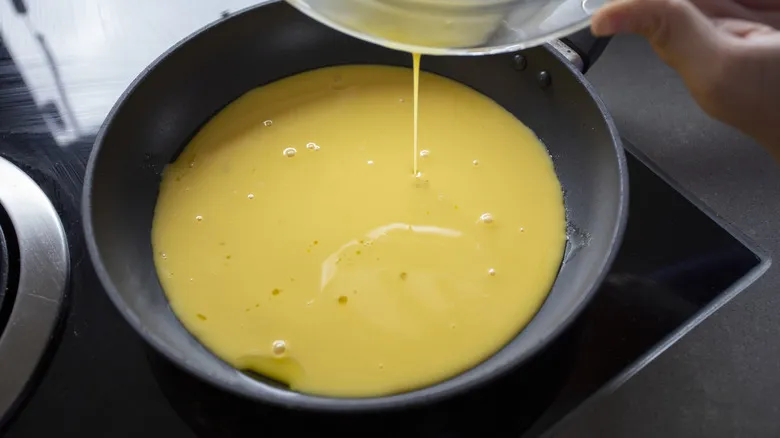
For many home chefs, hollandaise sauce is a delightful treat—provided someone else is preparing it. Although it consists of just a few basic ingredients (egg yolks, butter, lemon juice, and a pinch of salt), it has earned a reputation for being a frustrating recipe to master: one misstep can lead to a curdled disaster. It's no surprise that many of us are willing to pay extra for professionals to whip it up for us.
"Hollandaise is the only mother sauce that doesn't use a roux, making it the most challenging to stabilize," Ashley Lonsdale noted. Essentially, hollandaise is an emulsion of melted butter and egg yolks, so the cook's objective is to keep the butter evenly distributed within the eggs as they cook. This requires slow and careful mixing and cooking. "The key is to be gentle with your heat source, ensuring the sauce never gets too hot. If cooked too quickly at a high temperature, the emulsion between the butter and eggs will break," Lonsdale explained. "Patience is crucial! Rushing any part of the sauce-making process often leads to an undesirable texture, whether it's cooking hollandaise too fast or not taking the time to properly whisk in stock or dairy to a cooked roux."
Tomato sauce
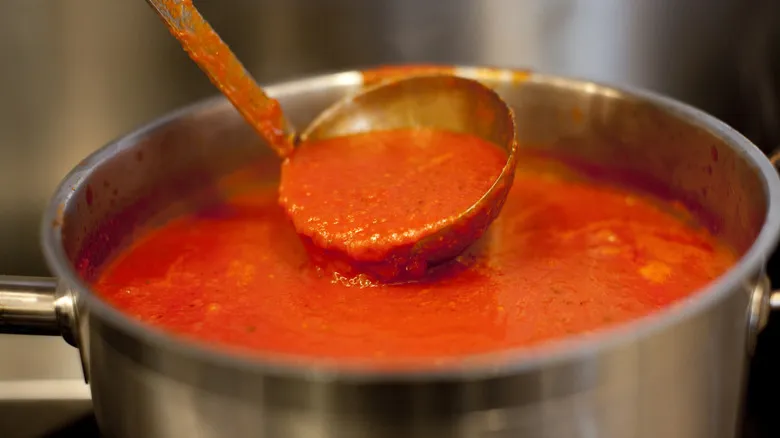
While tomato sauce might not be the first thing that springs to mind when considering traditional French cuisine, it plays a significant role, particularly in the culinary traditions of southern France. Moreover, it is quite different from the basic canned tomato sauce you might be familiar with. In addition to tomatoes, the classic French tomato sauce incorporates a flour-butter roux for thickening (though some contemporary chefs choose to skip this step), along with diced onions, carrots, celery, garlic, meat stock, and salt pork. Essentially, you can think of it as a tomato-rich meat gravy.
Tomato sauce also serves as the foundation for several vibrant and flavorful derivative sauces. For example, Provençale sauce combines tomato sauce with capers and olives, creating a bold and summery topping for fish. Creole sauce enhances tomato sauce with cooked onions, bell peppers, and celery, along with herbs and a hint of cayenne. So, if you're looking for something a bit more vibrant and zesty than a creamy French sauce, a tomato-based sauce might be just what you need.
How is French tomato sauce different from Italian tomato sauce?

Many Americans link tomato sauce primarily with Italian (or Italian-American) cuisine rather than with traditional French cooking. In truth, both culinary styles have incorporated tomato sauce, but the sauces they create differ significantly.
The more recognizable Italian tomato sauce is meant to highlight the fresh taste of tomatoes. It typically consists of crushed tomatoes simmered with olive oil, garlic, and herbs like basil, seasoned simply with salt and pepper. There’s no thickening agent; the tomatoes themselves provide both texture and flavor. While it’s vegetarian-friendly, it also serves as a base for hearty dishes like spaghetti and meatballs.
In contrast, traditional French tomato sauce is richer and more robust. It often includes a roux for thickening and incorporates meat broth along with tomatoes. However, like its Italian counterpart, it aims to enhance the natural flavor of the tomatoes. "A classic tomato sauce should achieve a balance of acidity and sweetness," noted Eric Tiglao.
Here are some unexpected things you can do with the mother sauces
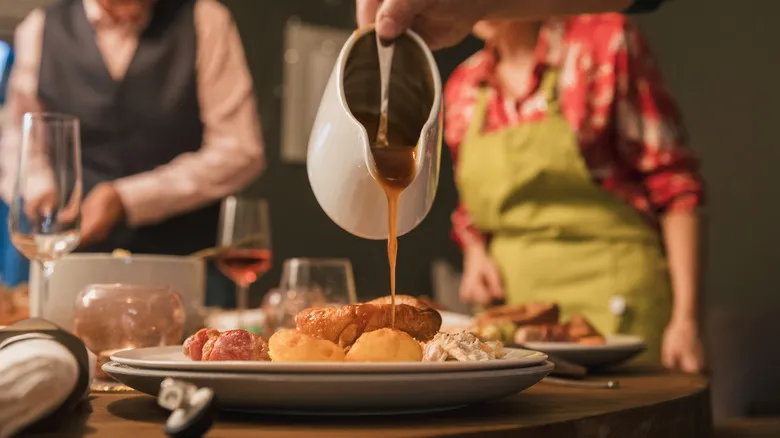
Although the five mother sauces are firmly established in French culinary tradition, their versatility may surprise you. Even if you’re not keen on preparing traditional French cuisine, these sauces can inspire a variety of delicious dishes beyond the French repertoire. For example, we’ve already noted how béchamel sauce serves as the foundation for classic American mac and cheese. It can also be transformed into a creamy base for another contemporary favorite: nacho cheese sauce. Simply mix in shredded cheese, RoTel tomatoes, and any additional chiles or ingredients you prefer. (Escoffier might be turning in his grave at the thought, but remember, it’s your kitchen, your rules!)
The other mother sauces offer just as much flexibility. Velouté, which is essentially poultry or seafood stock thickened with a roux, can serve as an excellent base for chowders or hearty soups (or even stand alone as a simple soup, especially if you use high-quality broth). If you’re adventurous enough to make your own hollandaise, you can take a cue from modern chefs and experiment with unique flavorings. For instance, consider substituting red wine for lemon juice to introduce a vibrant color and an unexpected flavor twist to your hollandaise. Additionally, instead of using regular clarified butter, you might try browned butter with capers for a nutty, tangy twist on the classic sauce.
Recommended

The Buttermilk Substitute That Makes Pancakes Even Tastier
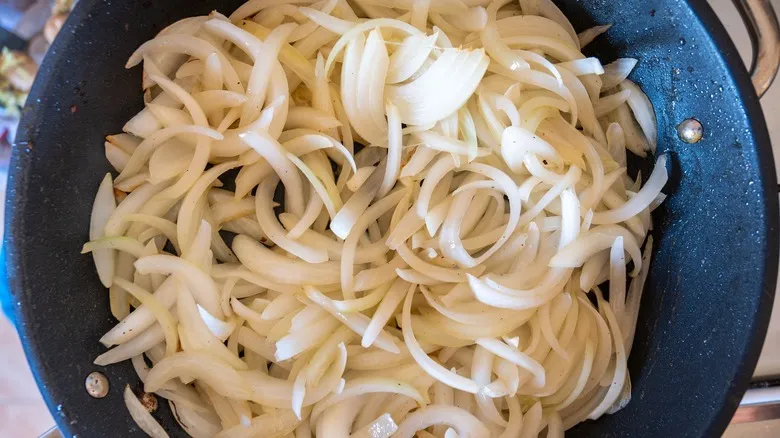
The Best Pan For Caramelizing Onions
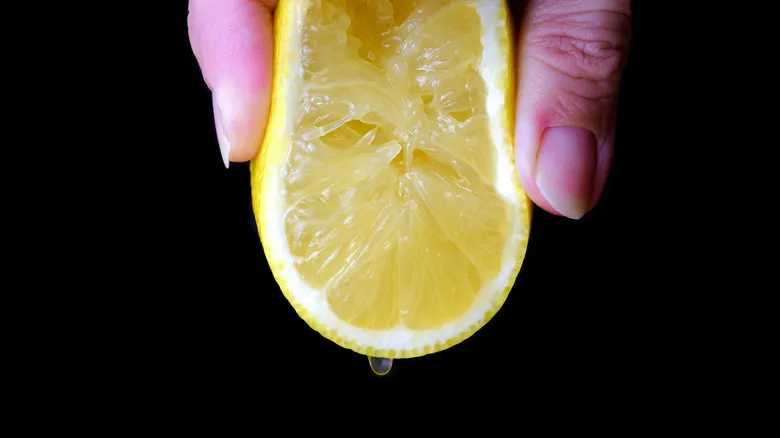
5 Tips And Tricks To Squeeze Out Every Last Drop Of Lemon Juice
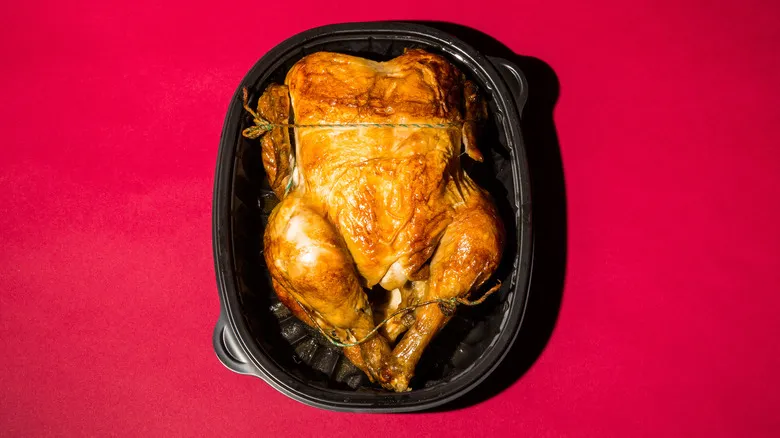
Here's How Long Rotisserie Chicken Lasts In The Fridge
Next up

